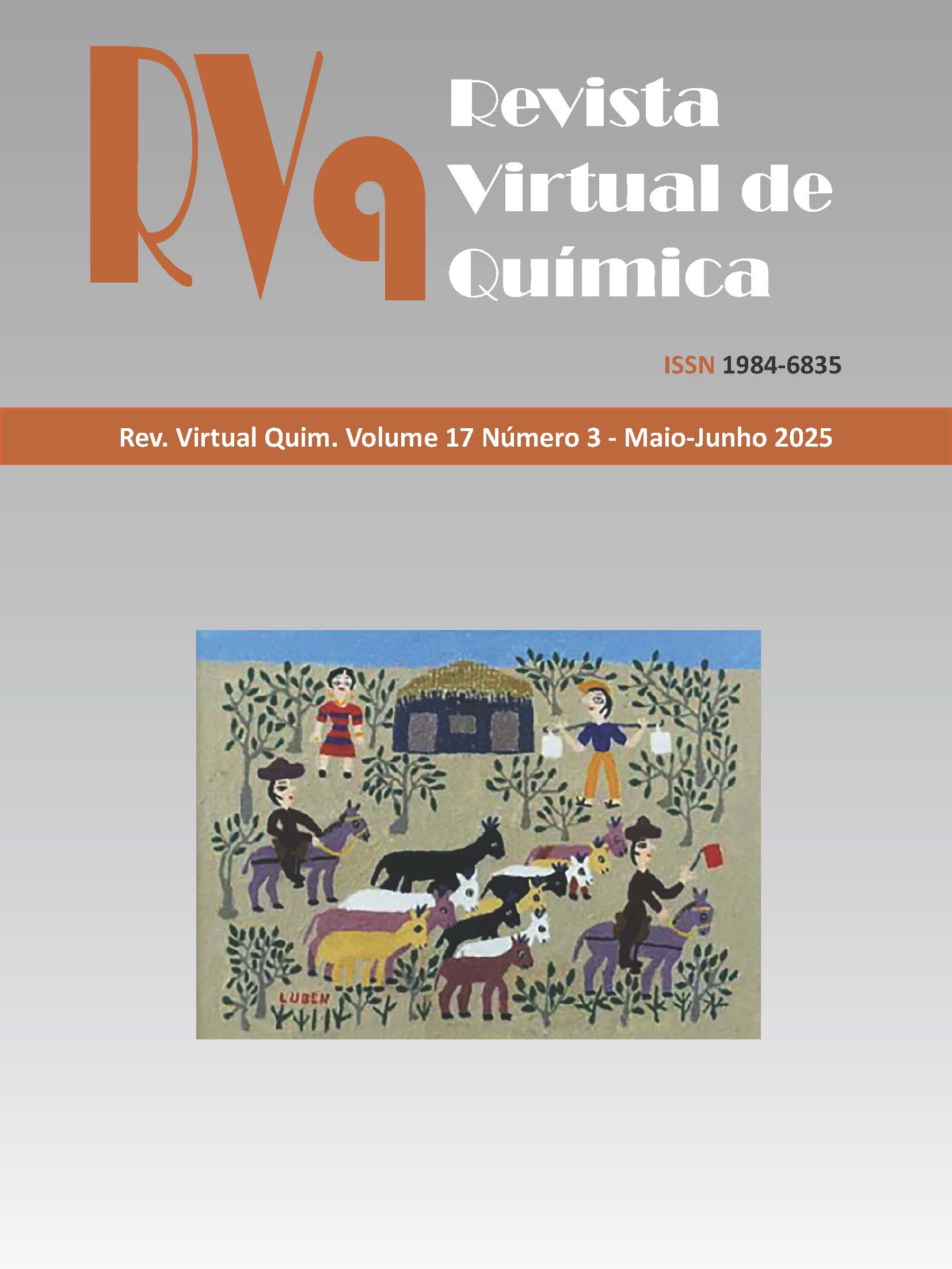Molecular Dynamics Simulations of Omega-3 and Omega-6 Lipid Mediators as Partial Agonists of PPARγ
DOI:
https://doi.org/10.21577/1984-6835.20250002Resumo
Peroxisome Proliferator-Activated Receptors (PPARs) are nuclear receptor proteins vital for metabolism,
cell growth, cell differentiation, autoimmune diseases, and inflammation resolution. However, the activation
mechanism by lipid-mediating agonists remains unclear. This study explores the molecular interactions
and per-residue binding energy calculations between the PPARγ subtype and four lipid mediators from
n-3 and n-6 fatty acids: AA, DHA, 4HDHA, and 9HODE, identified as natural PPARγ agonists. These
findings reveal the intricate atomic-level interactions between particular residues and ligands, which are
critical for determining agonistic activity. The most relevant residues were located in the loop, sheets,
and H3 helix of the receptor. Positively charged residues such as K263, K265, R280, and R288 were
prominent, with hydrophobic residues I281, L330, I341, and C285 also playing significant roles in ligand
affinity. Residues R280, Y327, S342, and K367 were notable for persistent hydrogen bonds. The lipid
carboxylate groups form stronger contacts through hydrogen bonds and electrostatic interactions than
the hydroxyl groups of oxidized lipids. This study sheds new insights on the molecular mechanisms
underlying the preferences of these lipid mediators, aiding the development of safer and more effective
PPARγ-targeted therapies inspired by the agonistic properties of its endogenous ligands.
Downloads
Arquivos adicionais
Publicado
Edição
Seção
Licença
Copyright (c) 2025 Revista Virtual de Química

Este trabalho está licenciado sob uma licença Creative Commons Attribution 4.0 International License.
Autores que publicam nesta revista concordam com os seguintes termos:
Os direitos autorais para artigos publicados nesta revista são do autor, com direitos de primeira publicação para a revista. Em virtude do acesso público, os artigos são de uso gratuito em aplicações educacionais e não-comerciais desde que com reconhecimento da autoria e da publicação nesta revista.

